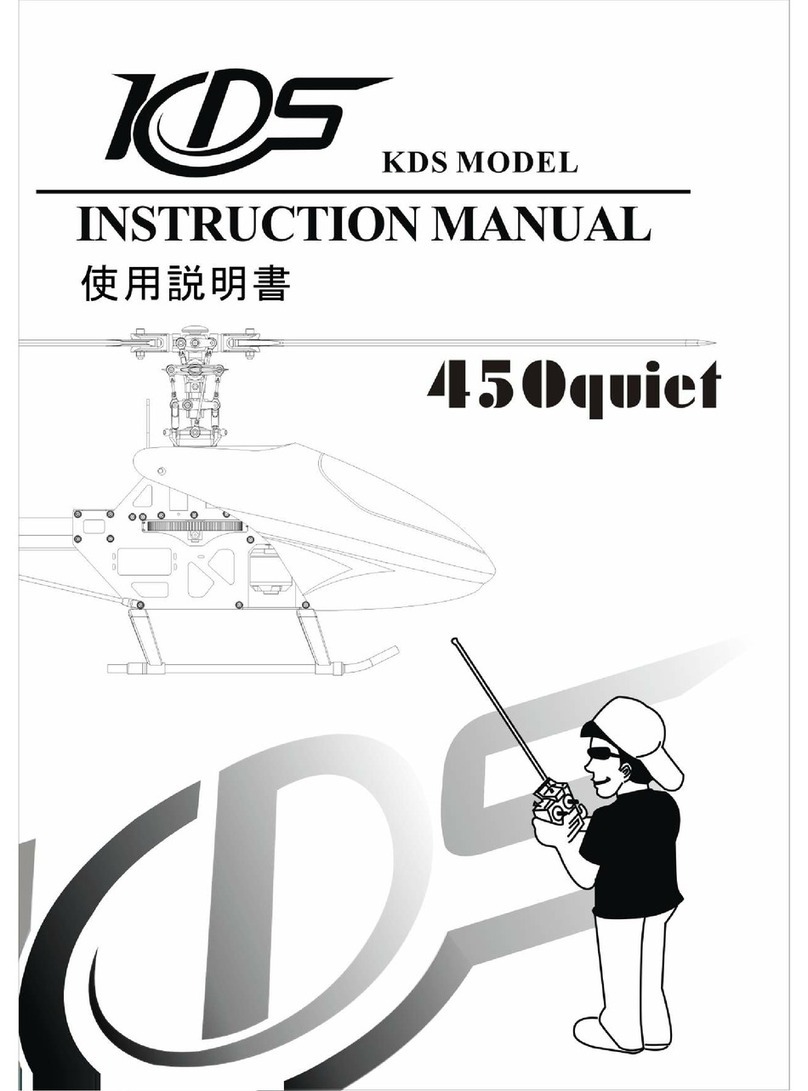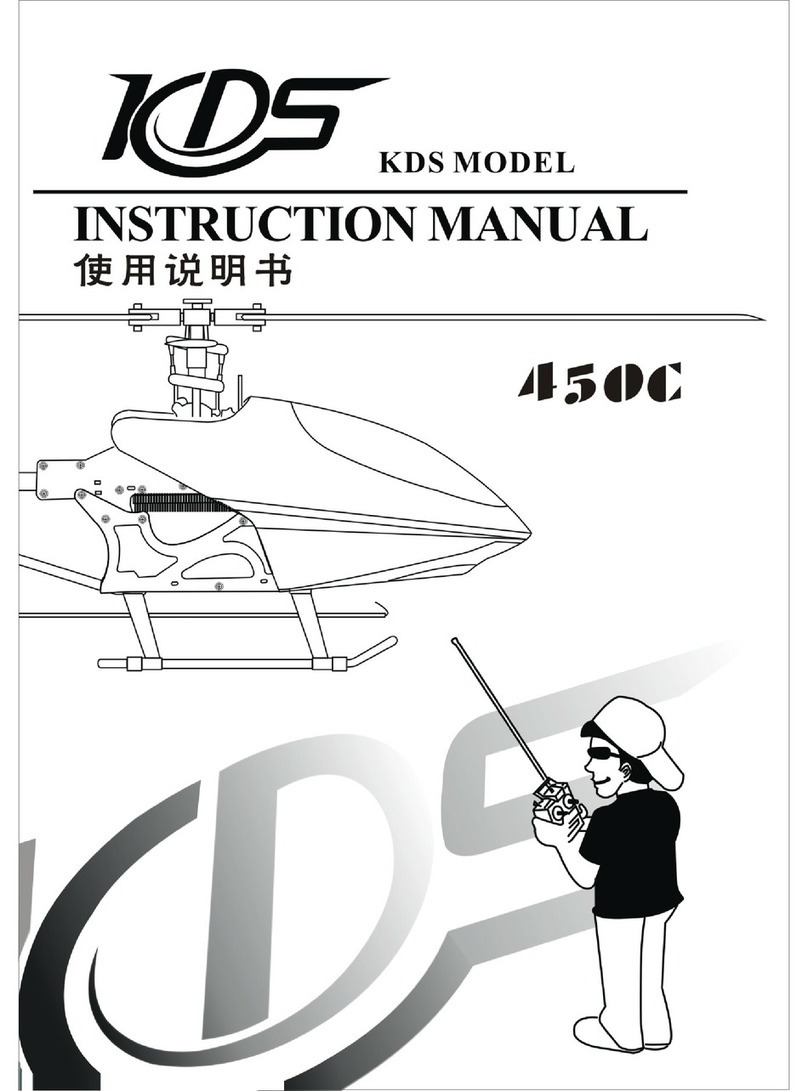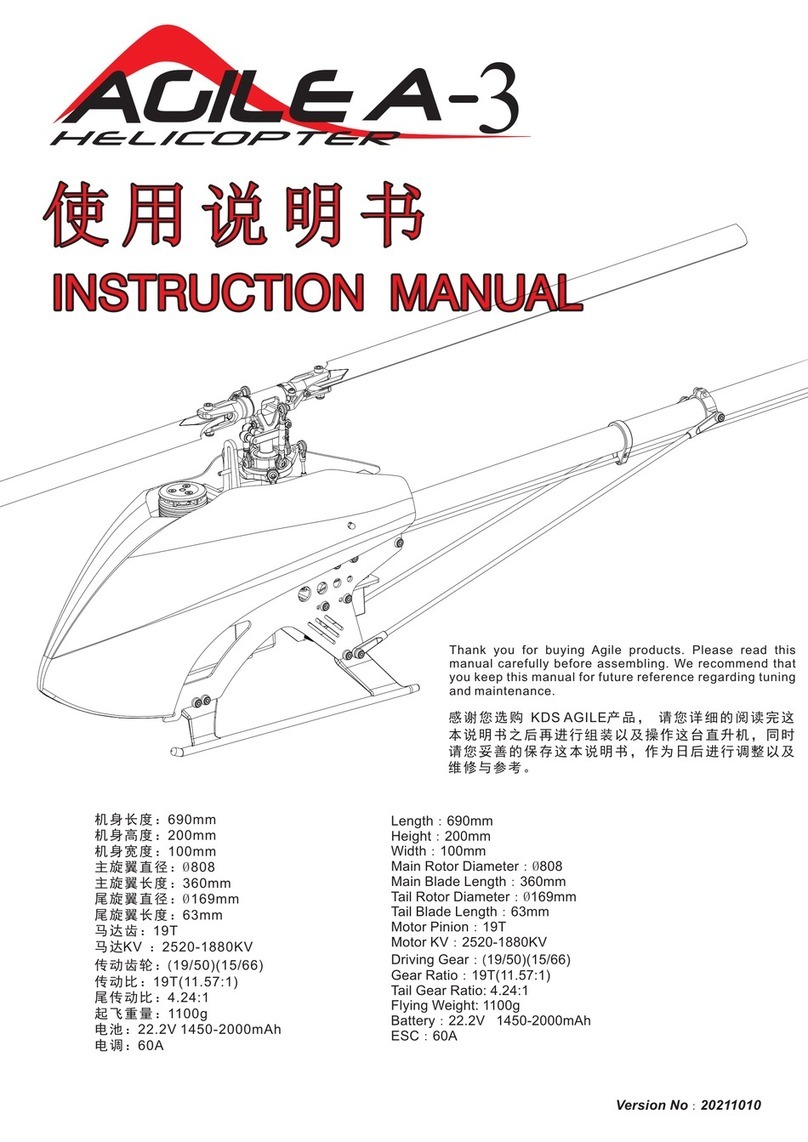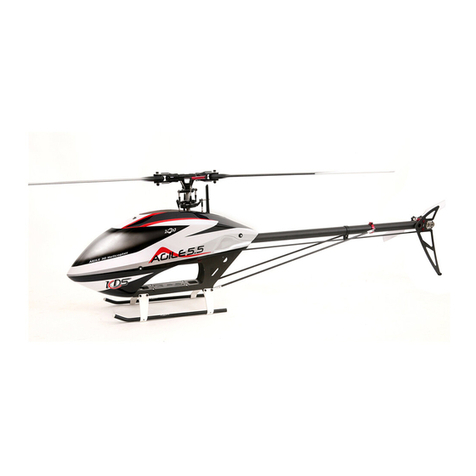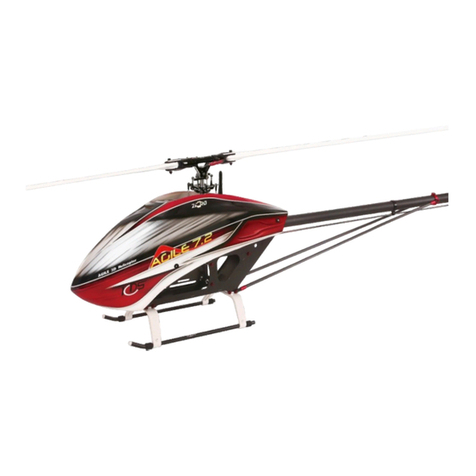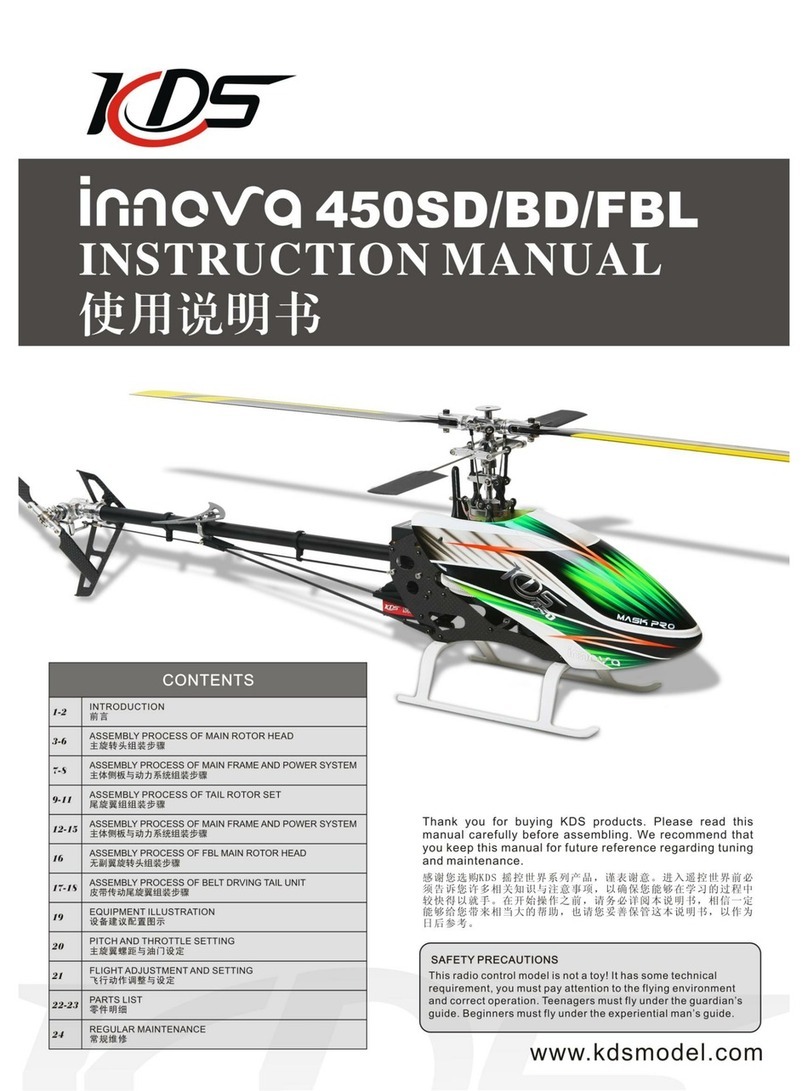Page. 1
Congratulations on your purchase of the Chase 360 radio controlled helicopter kit. Chase 360 was designed in Europe by Australia by Glen Kimpton and is proudly manufactured by KDS Model.
Our goal was to offer you something different with a minimum of parts, easy maintenance, and outstanding flying performances.
It’s time to fly different!...
IMP OR TANT N OTE S
NOTE F OR A SS EMB LY
R/C helicopters, including the Chase 360 are not toys. R/C helicopters utilize various high-tech products and technologies to provide superior performance. Improper use of this product can
result in serious injury or even death. Please read this manual carefully before using and make sure to be conscious of your own personal safety and the safety of others and your environment
when operating all CHASE products. Chase 360, KDS Model, their affiliates and authorized distributors are not responsible for personal injuries to the operators and others, and property
damages that could occur from the assembly, maintenance or your use/misuse of this product. Always respect the rules provided by your local remote control aircraft organization.
The following manual provide important instructions to correctly assemble the model. It is structured in a logical way, based on the work done in previous step. If you change the order, it may
result in additional or unnecessary steps. So we suggest you to read this user manual very carefully to understand correctly the assembly procedure. Failure to do so may not only downgrade
performances but also increase the risk of danger. Apply thread lock as indicated, allow the threadlock to cure before mounting parts. It is recommended to use threadlock on each bolt or
screw that are engaged with metal parts.
LOCATE AN A PP ROP RIATE LOC ATI ON
R/C helicopters fly at high speed, thus posing a certain degree of potential danger. Choose an appropriate flying site consisting of flat, smooth ground, a clear
open field, or a large open room, such as gymnasium or warehouse without obstacles. Do not fly near buildings, high voltage cables, or trees to ensure the
safety of yourself, others and your model. Do not play your model in inclement weather, such as rain, wind, snow or darkness.
OBTA IN T HE A SSISTA NC E OF A N EXP ER IE NC ED PI LOT
Before turning on your model and transmitter, check to make sure no one else is operating on the same frequency. Frequency interference can cause your
model, or other models to crash. The guidance provided by an experienced pilot will be invaluable for the assembly, tuning, trimming, and actual first
flight(recommend you to practice with computer-based flight simulator).
1.INTRODUCTION
2.SAFETY NOTES
During the operation of the helicopter, the main rotor will be spinning at a high rate of speed. The blades are capable of inflicting serious bodily injury and
damage the environment. Be conscious of your actions, and careful to keep your face, eyes, hands, and loose clothing away from the blades. Always fly the
model a safe distance from yourself and others, as well as surrounding objects. Never take your eyes off the model or leave it unattended while it is turned on.
lmmediately turn off the model and transmitter when you have landed the model.
ALWAYS BE A WARE OF T HE ROTAT ING BLA DE S
Enjoy the built and have a great time with you Chase 360!






